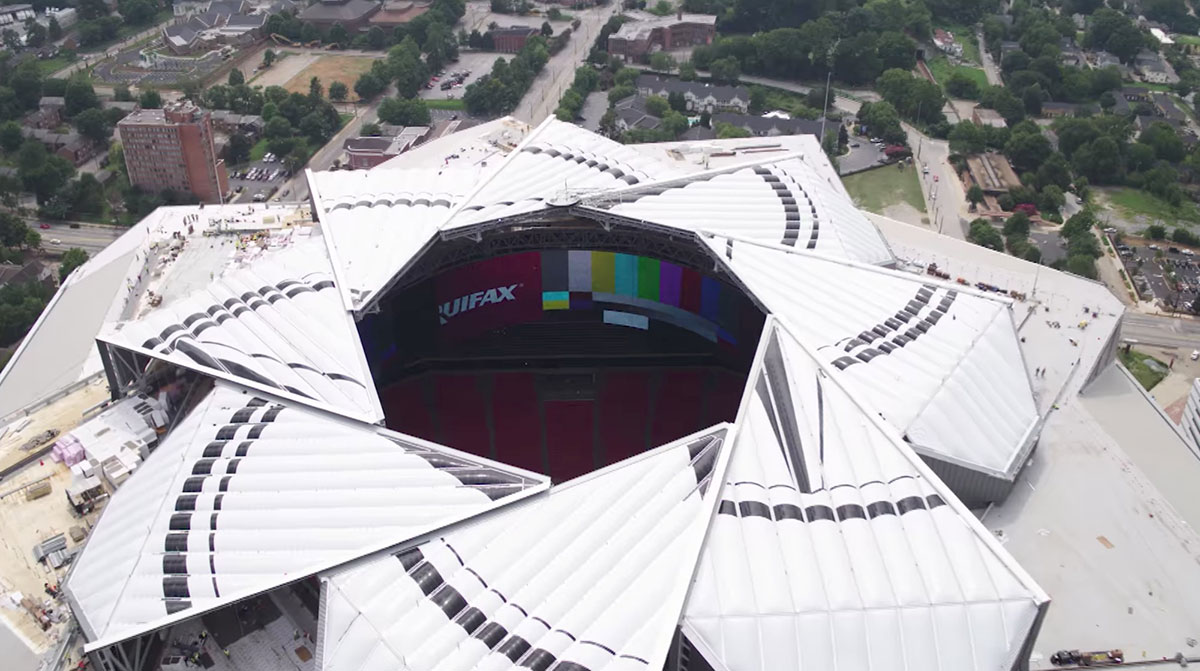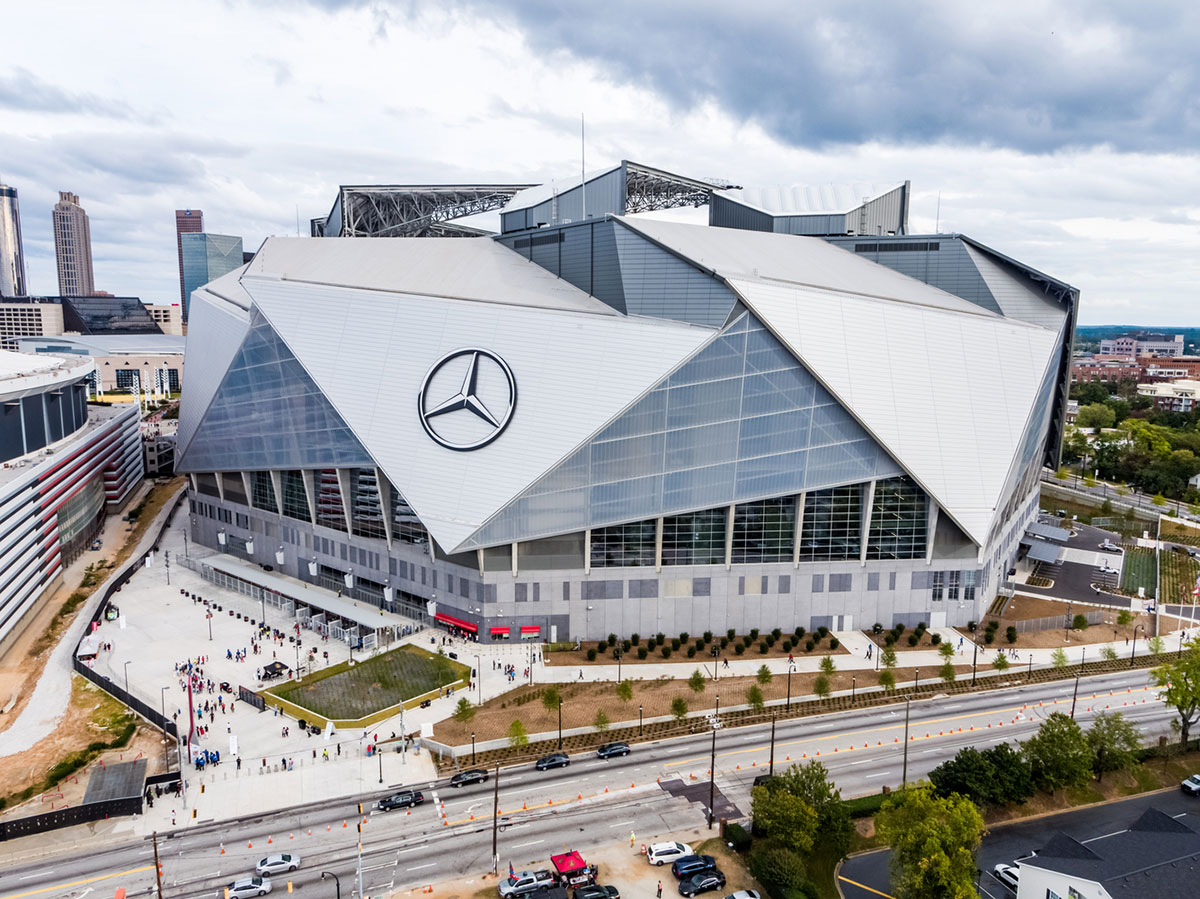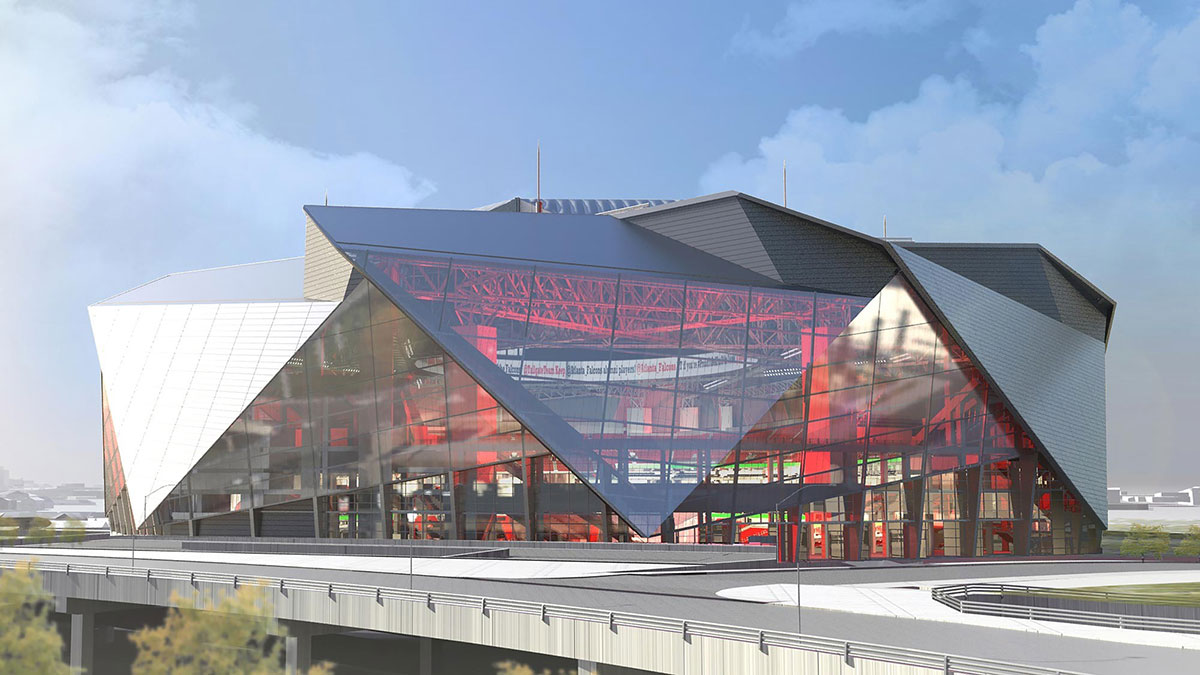Completed in 2017, the Mercedes-Benz Stadium was open to the public. Designed by HOK Architects, this marvel of a stadium became LEED platinum certified. The building boosts a rather unique aesthetic, with a retractable roof and a facade that is comprised of metal composite panels from ALPOLIC® and a transparent ETFE facade.

Challenges for this project arose in the form of reserving additional space for the retractable roof; however, a solution that saved space was offered. The stadium’s innovative design divided the roof into eight triangular petals, which open and close in a radial manner. Described as a “window to the city,” the Mercedes-Benz Stadium’s geometric facade offers sports fans excellent views of the games happening on the field below. The perimeter of the stadium’s roof is equipped with a high-definition, 360-degree halo video board which immerses fans in the game, providing a new kind of fan experience.

A reference to the stadium’s National Football League’s team, the Atlanta Falcons, can be spotted in the angular wing-like walls in the facade.
Sports stadiums like the Mercedes-Benz Stadium are constantly exposed to high traffic, and exposure to UV radiation, water, salt, among other elemental deterrents which compromise the exterior condition of the building. With this kind of exposure, coating degradation is expected after only a few years; however, because of the Lumiflon FEVE resin technology applied to the ALPOLIC composite panels on the exterior facade, the stadium will remain in pristine condition for decades.
Coatings systems that feature Lumiflon provide architectural surfaces with longevity, which is attributed to its superior durability, weatherability, and color and gloss retention properties. Additionally, its low VOC status contribute to the building’s sustainable design, helping to make the Mercedes-Benz Stadium North America’s first sports stadium to become LEED platinum certified.
Photos courtesy of ArchDaily

Categories Architecture